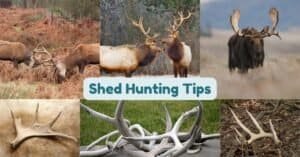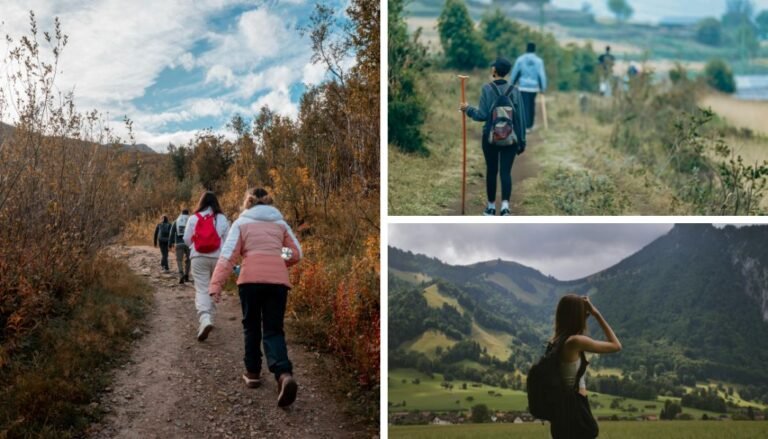Embarking on the Adventure of Shed Hunting: Tips in Finding Deer, Elk, and Moose Antlers
Shed hunting is more than just searching for antlers; it’s a rewarding outdoor adventure that connects you to nature and wildlife. Every year, deer, elk, and moose shed their antlers, leaving behind treasures waiting to be discovered. Whether you’re tracking these antlers to study wildlife patterns, craft unique items, or simply enjoy the thrill of the hunt, this guide has everything you need to succeed. Did you know elk antlers can weigh up to 20 pounds? Imagine the thrill of finding one! Let’s dive into this comprehensive guide on shed hunting tips and explore how to uncover deer, elk, and moose sheds like a pro.
What is Shed Hunting?
When I first heard about shed hunting, I thought, “Wait, sheds? Like backyard sheds?” Turns out, it’s nothing like that! Shed hunting is the search for antlers that deer, elk, and moose naturally shed every year. These animals drop their antlers as part of a biological cycle, and those antlers are just lying around out there, waiting to be found. Some folks might call it treasure hunting for nature lovers and honestly, that’s exactly how it feels.
The Basics of Shed Hunting
So here’s how it works: male deer, elk, and moose grow antlers every year, primarily for attracting mates and establishing dominance during mating season. Once that season wraps up, usually in late winter or early spring, their bodies naturally shed the antlers to conserve energy. The process leaves behind these gorgeous, often massive antler pieces scattered across forests, fields, and mountains. Shed hunters roam these areas, often on foot, to find them.
Deer antlers are typically smaller and more abundant, making them a great starting point for beginners. Elk antlers, on the other hand, are bigger and more dramatic, but finding one can feel like hitting the jackpot. Moose sheds? Now those are on a whole other level; they’re huge, and finding a matched set feels like winning the Super Bowl of shed hunting.
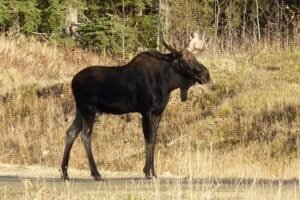
Why People Shed Hunt
I’ll be honest, when I started shed hunting, I thought it was just about finding antlers to hang on a wall. Turns out, people have all kinds of reasons for getting into it.
For some, it’s purely a hobby. There’s something therapeutic about wandering through the woods, scanning the ground for a glimmer of white or brown. You feel like a detective piecing together clues. Plus, it gets you outside during that awkward time of year when winter’s ending, but spring hasn’t fully sprung.
Others are in it for crafting. I’ve met people who make incredible things out of antlers: chandeliers, knife handles, jewelry, you name it. Antlers are surprisingly versatile and can add a rustic touch to just about anything.
Then there are the wildlife enthusiasts. For these folks, shed hunting is like a biology field trip. Finding a shed tells you where animals have been hanging out, what their habits are, and even how healthy they might be. It’s a non-invasive way to study wildlife and connect with nature.
And let’s not forget about dog lovers. Training dogs to sniff out sheds has become a thing, and it’s a blast. Watching a pup proudly trot back with a six-point antler in its mouth is worth every second of training time.
A Word of Caution
While shed hunting sounds like all fun and games, it’s important to be mindful. Many areas have specific seasons or restrictions to ensure you’re not disturbing wildlife during critical times of the year. It’s also good to check local laws and be respectful of private property.
Shed hunting can be whatever you want it to be an adventure, a workout, a creative outlet, or even a science project. But trust me, once you find your first antler, you’ll be hooked. There’s just something about holding a piece of nature’s artistry in your hands that makes all the effort worth it.
Why Do Deer, Elk, and Moose Shed Their Antlers?
The Biological Process of Antler Shedding
Antler shedding is one of those natural wonders that never fails to amaze me. It’s like nature has its own seasonal rhythm, and these animals are just tuned into it perfectly. Here’s how it works: antlers are made of bone, and during the mating season (the rut), testosterone levels in males skyrocket. These antlers serve as symbols of dominance and tools for sparring with rivals. But once the rut is over and testosterone levels plummet, the connection between the antlers and the skull weakens.
This connection happens at a spot called the pedicle, which is essentially the antler’s “anchor” to the skull. Lower testosterone levels trigger cells to break down the bone at the pedicle, eventually causing the antlers to fall off. It’s fascinating because this process is almost like the body saying, “Okay, we’re done with these for now.” And don’t worry, it doesn’t hurt the animal. In fact, it’s probably a relief after carrying around those hefty headpieces for months.
Timing Differences Between Deer, Elk, and Moose
Now, the timing of antler shedding is where things get interesting. It’s not a one-size-fits-all situation, deer, elk, and moose all follow slightly different schedules. In general, smaller animals like deer tend to lose their antlers earlier than larger species like elk and moose. For instance, white-tailed deer often shed their antlers in late winter, around January or February, though some may hold on until March.
Elk, on the other hand, usually wait until March or April to drop theirs. Moose are the last to let go, often shedding their massive racks as late as May in colder climates. The reason for this staggered timing boils down to factors like species-specific mating cycles and environmental conditions. For example, in harsher northern regions, moose tend to shed later because their biological clocks are aligned with longer winters.
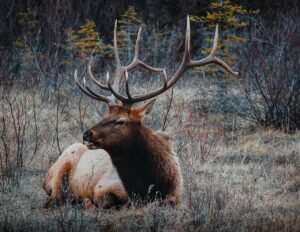
Factors Influencing the Size and Quality of Sheds
Not all antlers are created equal, and the size and quality of sheds can vary widely. The biggest factor here is nutrition. Animals that have access to abundant food sources especially those rich in calcium and phosphorus tend to grow larger, healthier antlers. A moose that’s munching on nutrient-packed vegetation all summer is going to have an impressive rack come fall.
Age plays a role, too. Younger animals, like a two-year-old deer, might have smaller antlers compared to an older, more mature buck. Genetics also come into play. Some animals are just predisposed to grow larger antlers, thanks to their DNA. But here’s the kicker: injuries can also influence antler growth. If an animal gets hurt on one side of its body, it can cause a phenomenon called “contralateral effect,” where the antler on the opposite side grows abnormally.
So, next time you stumble across a shed antler while hiking, take a moment to appreciate the story it tells. It’s not just a piece of bone; it’s a snapshot of that animal’s life, health, and environment. Plus, let’s be honest, finding a shed feels like winning a little nature lottery, doesn’t it?
Best Times for Shed Hunting
Shed hunting is one of those outdoor activities that combines adventure, patience, and a little bit of luck. Timing it right, though? That’s the secret sauce. Over the years, I’ve learned (often the hard way) that understanding when and why animals like deer, elk, and moose shed their antlers can make or break a day in the field. Let me walk you through some timelines and tips to help you plan your next shed-hunting adventure.
Seasonal Timelines for Deer, Elk, and Moose Antler Sheds
If you’re looking for deer antlers, late winter to early spring is prime time, think February through April. I’ve found that whitetail bucks tend to drop their antlers earlier in warmer climates, sometimes as early as January, while in colder northern regions, it’s more common to see sheds in March. Elk and moose? That’s a slightly different game. Elk tend to shed a bit later (mule deer as well), often in March or April, while moose can start losing their antlers as early as December in some places.
One year, I made the mistake of going out for elk sheds in mid-February, assuming their timeline was similar to deer. I came back with nothing but cold toes and a bruised ego. Lesson learned: research your local herd’s patterns, and don’t lump all animals into the same schedule.
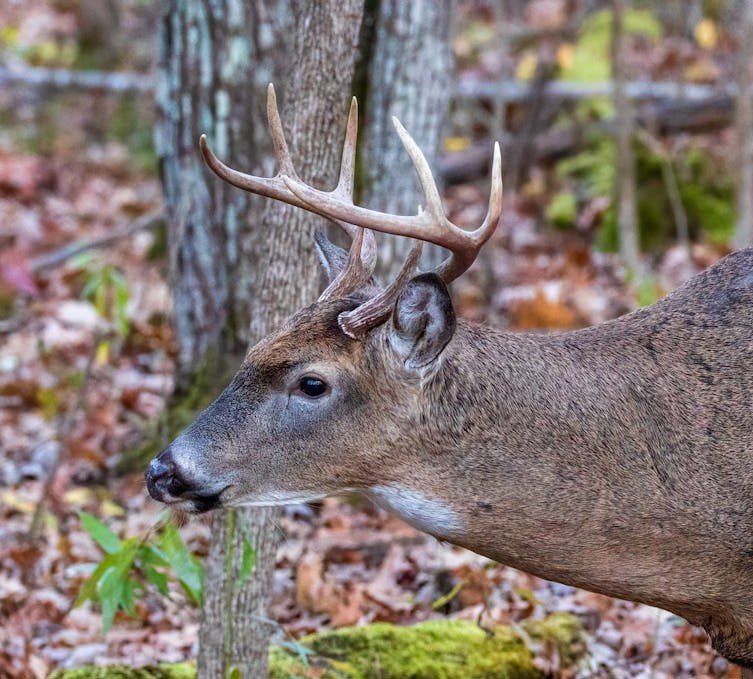
How Weather and Habitat Affect Shedding
Weather plays a massive role in when shedding starts. A harsh winter can stress animals, causing them to drop their antlers earlier, while milder winters might delay things. Pay attention to snowpack levels, too. If it’s been a heavy snow year, sheds might be harder to spot because animals stick to dense cover or lower elevations. Conversely, during mild winters, they may roam more freely, leaving sheds in more open areas.
Habitat also matters. Once, I spent hours searching a sprawling meadow, only to realize the deer had moved to nearby cedar thickets for better shelter. Nowadays, I focus on bedding areas, food sources, and well-worn trails where animals are more likely to drop their antlers while going about their daily routines. Check along fence lines; they often lose an antler when they land.
Key Signs That Shedding Season Has Begun
The first sign? Watching the bucks themselves. If you see a few one-antlered deer wandering around—or a buck that looks lopsided, it’s game on. Trail cameras can be a lifesaver here. I set mine up near food plots or watering holes and start seeing “bald” bucks around the same time every year, which helps me zero in on the right timeframe.
Look for fresh rubs on trees, too. When bucks shed, the base of the antler can sometimes rub against branches, leaving behind visible signs. Tracks can also be a clue. A heavy track with drag marks might mean a big buck recently passed through and might have left a shed nearby.
Final Tip: Here’s a nugget from my own experience: don’t go too early. I can’t tell you how many times I’ve stomped around a promising area only to return weeks later and find antlers right where I’d been. Patience is key, and so is timing. Keep an eye on seasonal changes, monitor the weather, and use signs from the animals themselves. Trust me, it’ll save you a ton of frustration and make the payoff even sweeter.
Habitat Preferences for Deer, Elk, and Moose During Shedding Season
Shed hunting isn’t just about wandering through the woods and hoping for the best; it’s a calculated treasure hunt, and understanding the habitat preferences of deer, elk, and moose is key to success. Over the years, I’ve learned this the hard way; like the time I spent an entire weekend combing through dense forests only to find…nothing but a few old beer cans. Turns out, I was looking in all the wrong places because I didn’t understand where these animals actually live during shedding season.
Deer, for instance, tend to stick to lower elevations in the winter. They’re looking for areas where food is abundant but easily accessible; think south-facing slopes where the snow melts quicker. I’ve had the best luck near thick stands of pine or cedar where they bed down for warmth. Elk, on the other hand, tend to be found in slightly higher elevations but will often migrate to grassy valleys or flatlands when snow piles up. I’ll never forget the first elk shed I found; its massive, curving beam was poking out of a patch of sagebrush on the edge of a winter feeding area.
Moose are the kings of wet, marshy environments. If you’re after moose antlers, stick close to willow thickets, ponds, and riverbanks. They’re big animals with even bigger appetites, so they stay near food and water sources year-round. Once, I found a matched set of moose sheds near a frozen creek, an absolute jackpot. I almost didn’t believe my eyes; they were so huge I could barely carry them both out!
The trick is to study maps and focus your efforts on where these animals spend most of their time in winter: near food, shelter, and warmth. That knowledge saves a ton of wandering and a lot of frustration.
Focus Areas: Bedding Spots, Feeding Zones, Migration Paths, and Water Sources
When I first started shed hunting, I didn’t realize how much ground these animals actually cover. I’d walk randomly, convinced that antlers were just waiting around the next tree. (Spoiler alert: they weren’t.) Over time, I learned to focus on four main areas: bedding spots, feeding zones, migration paths, and water sources.
Bedding spots are goldmines because deer, elk, and moose spend so much time resting there in winter. Look for sheltered pockets of brush, thick timber, or sunny spots on south-facing slopes. If you find trails crisscrossing these areas with fresh droppings or tracks, you’re in the right spot.
Feeding zones are equally promising. You’ll find these near open meadows, crop fields, or sagebrush flats. Animals lose their antlers when they’re moving or feeding, so walking the perimeters of these areas is a smart move.
Bonus tip: check fence lines if you’re near agricultural areas. I’ve found sheds snagged on wires more than once or on the ground nearby.
Migration paths are underrated. Deer and elk often follow the same trails during seasonal migrations, and antlers can drop along the way. Pay attention to well-worn paths leading from higher elevations to lowlands, especially those near pinch points like narrow valleys or ridgelines.
Finally, don’t skip water sources. These animals need to drink, even in winter, and I’ve stumbled upon antlers near frozen streams, ponds, and even stock tanks. One of my favorite finds came from a muddy shoreline after a spring thaw; it was covered in dirt but cleaned up beautifully.
This is where shed hunting can get a little tricky and sometimes downright frustrating. Public lands are fantastic because they’re open to everyone, but they can get picked over quickly, especially near popular trailheads. Private lands, on the other hand, often have untouched sheds, but accessing them isn’t always easy.
I’ve had good luck starting with public lands. National forests and Bureau of Land Management (BLM) lands are prime spots for shed hunting, especially if you’re willing to hike away from the beaten path. Trust me, the farther you go, the better your chances of finding something awesome. I always carry a detailed map or GPS app to stay within legal boundaries.
When it comes to private land, asking for permission is crucial. Be polite, explain your intentions, and offer to share a portion of your finds if the landowner seems hesitant. I’ve found that farmers and ranchers are often willing to let you look, especially if you promise to keep an eye out for downed fences or other issues.
Oh, and here’s a pro tip: check state regulations before heading out. Some states and provinces have specific rules about shed hunting, like seasonal restrictions to protect wintering animals and fines for breaking those rules can be steep. A friend of mine learned that the hard way one spring when he didn’t realize the season wasn’t open yet. Let’s just say he’s a lot more careful now.
Shed hunting is equal parts strategy and patience, but when you finally spot those antlers gleaming on the ground, it’s absolutely worth it.
Tools and Gear You’ll Need
Essential Clothing and Footwear for Various Terrains
If there’s one thing I’ve learned from shed hunting in unpredictable terrains, it’s that being uncomfortable can ruin the experience faster than you can say “blisters.” Whether you’re hiking through thick brush or scaling rocky hillsides, the right clothing and footwear are critical. I can’t count the number of times I thought my old hiking boots were “good enough,” only to end up hobbling back to the car with sore arches and wet socks. Trust me, waterproof, ankle-supporting boots are a game-changer. Look for ones with a Vibram sole; they grip like a dream, even on slippery terrain.
Layers are another must-have. Shed hunting often involves starting cold in the morning and peeling layers off as the sun climbs. I stick to a moisture-wicking base layer, a warm mid-layer like a fleece or puffy jacket, and a weather-resistant outer layer. Bonus tip: If you’re in snake country, consider gaiters, they’re lifesavers, literally.
Equipment: Binoculars, GPS, UV Flashlights, and Rakes
Binoculars might seem unnecessary when you’re scanning the ground for antlers, but they save your legs and energy. A good pair of 8×42 binoculars can help you spot sheds from afar, especially in open fields or when combing steep hillsides. I can’t tell you how many times I’ve celebrated a “find” from a distance, only to hike over and realize it’s just a curved stick. It happens, but the binoculars cut down on those false alarms.
Then there’s the GPS. Whether you prefer a handheld device or an app like Gaia GPS, don’t skimp on navigation. Marking spots where you’ve found sheds or want to revisit is invaluable. I made the mistake of relying solely on my phone once, only to lose signal deep in the woods. Lesson learned: always carry a backup map and compass, just in case.
UV flashlights? Oh, these are a cool trick. Some antlers, especially older ones, fluoresce under UV light. It’s not foolproof, but it’s a fun tool to have, especially when you’re searching at dusk. As for rakes, they’re perfect for gently combing through brush without damaging potential finds. Look for a lightweight, collapsible rake to save space in your pack.
Packing Efficiently for Multi-Day Elk or Moose Shed Hunts
When you’re out for multiple days, packing efficiently is an art form. I learned this the hard way during my first multi-day hunt when I stuffed my pack with way too much gear. By day two, my shoulders were screaming, and I was wishing I’d left half of it at home. Now, I stick to the essentials: a lightweight, durable pack with hydration capability, a compact first-aid kit, and enough food and water for the trip.
Opt for calorie-dense snacks like trail mix, jerky, or energy bars. And don’t forget the basics: a lightweight tent or bivvy sack, a sleeping bag rated for the season, and a compact stove for quick meals.
Pro tip: Roll your clothing tightly to save space and keep your heavier items closer to your back for better weight distribution.
Oh, and one last thing, pack a small notebook or use your phone’s notes app to track your finds. There’s something satisfying about mapping your success and learning from each trip. Shed hunting is as much about preparation as it is about the thrill of discovery, and having the right tools and gear makes all the difference.
Proven Techniques for Finding Antlers
When I first got into shed hunting, I was honestly overwhelmed. There’s just so much ground to cover, and it felt like finding a needle in a haystack or, well, an antler in the woods. Over time, I picked up some strategies (mostly through trial and error) that made the process a whole lot more efficient and, honestly, more fun. Let me walk you through what’s worked for me so far.
Scanning and Grid-Search Strategies for Different Terrains
The first thing I learned was how important it is to slow down and really look. I can’t tell you how many times I’ve walked right past a shed because I was in a hurry or not paying attention to detail. Now, I use a simple grid-search strategy that’s been a game changer.
When I’m in open fields, I’ll mentally divide the area into smaller sections, usually about the size of a basketball court. I walk back and forth in straight lines, scanning a few feet ahead and to each side. In wooded or rocky areas, I shrink those sections down because there’s just more stuff, fallen logs, bushes, rocks, that can hide antlers.
One pro tip: lighting matters. Overcast days are my favorite for shed hunting because the diffused light makes the white or brown of antlers pop against the terrain. Sunny days can create shadows that play tricks on your eyes, making every stick look like a tine (and trust me, I’ve had plenty of “stick-tines” moments).
Using Deer, Elk, and Moose Trails to Narrow Your Search
Here’s the thing: animals are creatures of habit. Once I figured that out, it became a lot easier to narrow down my search. I focus on deer, elk, and moose trails, especially in late winter or early spring when they’ve been shedding.
Trails leading to bedding areas are goldmines. Look for places where animals lay down, soft spots under trees, grassy patches, or the lee side of a hill. Antlers often drop when they bed down because the relaxed position can make them pop off more easily. Another great spot is feeding areas. If you can find a field with leftover corn or alfalfa, check the trails leading in and out.
Oh, and water sources! I’ve found a few sheds right next to creeks or ponds where animals bend down to drink. It makes sense when you think about the motion of lowering their heads, gravity does half the work for you.
Solo vs. Group Shed Hunting Strategies for Efficiency
I used to think shed hunting was better as a solo activity, peaceful, meditative, just you and nature. And while that’s great, I’ve found some serious advantages to going in a group, too.
When I’m solo, I focus on smaller areas and take my time. It’s perfect for really combing through thick woods or places where you know antlers are likely to drop. On the other hand, groups are ideal for covering big open fields or expansive meadows. We’ll spread out, usually with 15–20 feet between each person, and move in a line. If one of us spots something, we all converge and celebrate like we just won the lottery.
One downside to groups is competition; friendly, of course, but it’s still there. To avoid stepping on each other’s toes, set some ground rules, like who gets to claim a shed if two people spot it at the same time.
Ethical and Legal Considerations in Shed Hunting
Shed hunting is an awesome way to connect with nature and snag a little piece of the wild for yourself, but let’s be real, there’s a fine line between enjoying the outdoors and causing harm. I learned this the hard way on one of my first outings. Back then, I didn’t think much about the impact I might have on the wildlife. I was just excited to find a shed antler. Turns out, there’s more to it than just walking through the woods and keeping your eyes peeled. Let me break it down for you.
Respecting Wildlife and Natural Ecosystems
One of the biggest lessons I’ve learned is how important it is to respect the animals we share the space with. That means understanding their patterns and not barging into areas where they might be resting or feeding. One winter, I went into a spot that looked perfect for finding antlers. What I didn’t realize was that the deer were still relying on that area for shelter and food. I spooked a small herd, and it hit me later that I’d probably burned precious calories they needed just to survive the season.
Now, I always do some research before heading out. Deer and elk are most vulnerable in the late winter and early spring, so I avoid areas with known heavy wildlife activity during those times.
Bonus tip: Stick to established trails when you can. Not only does this minimize your impact on the environment, but it also makes you less likely to trample sensitive vegetation or disturb other critters.
Regulations for Shed Hunting on Private and Public Lands
The rules around shed hunting can get a little murky, depending on where you are. One thing’s for sure, though, trespassing is a no-go. I once got a little too eager and wandered onto what I thought was public land. Spoiler alert: It wasn’t. Thankfully, the landowner was understanding, but I could’ve faced some hefty fines.
Public lands are fair game in most cases but always check local regulations first. Some areas have restrictions to protect wildlife, like seasonal closures or permit requirements. In some states, you can’t even pick up antlers without a license. Crazy, right? But it’s all designed to keep things sustainable. A quick call to the local wildlife agency can save you a lot of hassle and potentially your wallet.
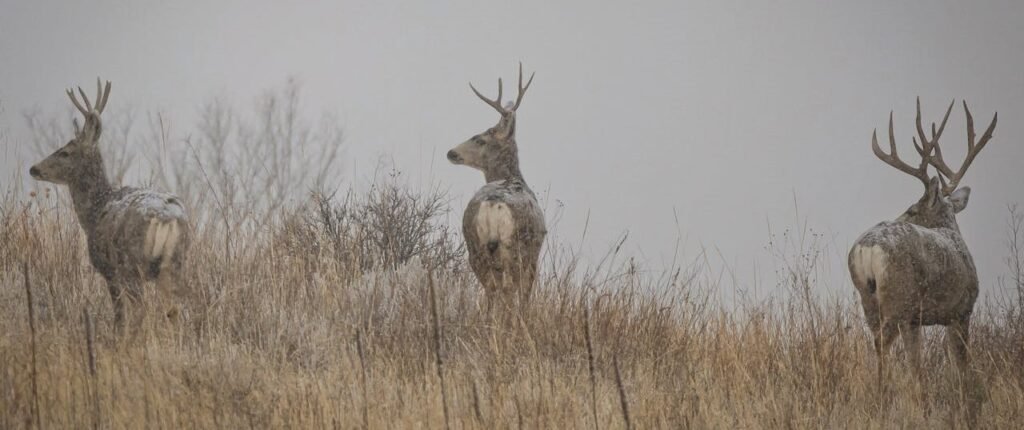
Timing Your Shed Hunting to Avoid Disturbing Animals
When it comes to timing, patience is key. You might be tempted to head out as soon as the snow starts melting, but early shed hunting can cause serious stress for animals still dealing with harsh conditions. I usually wait until mid-March or even April, depending on the weather. By then, the antlers have already dropped, and the animals have had a chance to move to less critical areas.
Another thing to consider is the time of day. I’ve found that mornings and evenings are best for spotting sheds, as the low-angle sunlight makes them easier to spot. Just be mindful of nearby wildlife and keep your distance. The last thing you want is to send a stressed-out animal bolting.
In the end, shed hunting is all about balance; getting out there and having fun while respecting the wildlife and the laws that protect them. Trust me, when you do it right, the rewards feel so much better.
Cleaning, Storing, and Using Found Antlers
Finding antlers while wandering through the woods or fields feels like stumbling upon a hidden treasure. But, trust me, the excitement of the find is only half the story, knowing how to clean, store, and use them is where the real fun begins. Over the years, I’ve picked up a few tricks (and made plenty of mistakes) that I’m happy to share.
How to Clean and Preserve Deer, Elk, and Moose Antlers
When you first pick up an antler, it’s probably covered in dirt, moss, or even dried blood. Don’t freak out, it’s all part of nature’s charm. I usually start with a soft brush or an old toothbrush and gently scrub away the dirt. Warm, soapy water works wonders here. Just be sure not to soak the antlers too long, as they can absorb water and weaken over time.
One time, I thought soaking them overnight would make the cleaning easier. Rookie mistake! The antler lost some of its natural sheen, and I learned that a quick scrub is plenty. Once they’re clean, I rinse them thoroughly and let them air dry completely; preferably in a shady spot to avoid sun bleaching.
To preserve the antlers, I’ve found a little mineral oil goes a long way. It helps restore some of their natural luster, especially if the antlers look dry or dull. Rub the oil on with a soft cloth, wipe off the excess, and voilà, they’ll look like they just fell off the animal yesterday.
Creative Uses: Furniture, Crafts, and Décor
Antlers are like the Swiss Army knife of natural décor; they’re versatile and surprisingly easy to work with. I’ve turned smaller deer antlers into key hooks and coat racks, while larger moose or elk antlers make stunning chandeliers or rustic furniture accents.
One of my favorite projects was crafting a picture frame using a pair of matching deer sheds. It took a bit of patience (and a lot of hot glue), but now it’s the centerpiece of my living room. If you’re new to crafting, start simple, like an antler centerpiece or candle holder. These projects don’t require fancy tools, just a bit of creativity and elbow grease.
For anyone who’s into leatherwork, antlers also make fantastic knife handles or belt buckles. And if you’re feeling ambitious, try carving intricate designs into the antlers; they’re surprisingly soft to work with when you use the right tools, like a Dremel.
Selling Antlers: Value Variations Between Deer, Elk, and Moose Sheds
If you’ve got more antlers than you know what to do with, selling them can be a great option. But here’s the thing: not all antlers are created equal. Deer antlers, while beautiful, tend to fetch a lower price than elk or moose sheds. Why? It’s mainly about size and weight, elk and moose antlers are larger, denser, and often more sought after for furniture or large-scale crafts.
For example, I sold a set of matching elk sheds a while back for about $150, while similar deer antlers only brought in $30. If you’ve got moose antlers, those can go for even more, upwards of $200 or more, depending on their size, condition, and buyer.
Pro tip: Check for chew marks! Squirrels love to snack on antlers, and damaged ones might lower their value. When selling, it’s also worth researching local markets or online platforms like Etsy or eBay, where buyers are often willing to pay a premium for unique pieces.
Overcoming Common Challenges in Shed Hunting
Shed hunting isn’t always the laid-back stroll through the woods we imagine. Sometimes, it feels like you’re wandering aimlessly, and nature seems to hide antlers better than an Easter bunny hides eggs. But over the years, I’ve picked up a few strategies that make tough terrains, harsh weather, and those frustratingly unproductive days a little easier to handle.
Strategies for Tough Terrains or Harsh Weather
Let’s be honest, shed hunting in rough terrain can leave you second-guessing your hobbies. I once trekked through a thick, bramble-filled hillside that left my legs looking like I’d fought a rose bush and lost. Lesson learned: proper gear matters. If you’re heading into rocky, uneven terrain, invest in sturdy, waterproof boots with good ankle support. Your feet will thank you. And for those thorny or brush-filled areas, lightweight hiking pants or gaiters are a game-changer.
Weather can be another beast entirely. Spring rains can turn trails into mudslides, and late-winter snow can hide sheds like nature’s cruel joke. My solution? Layer up. Wear a moisture-wicking base layer, a warm mid-layer, and a breathable, water-resistant outer layer. A pair of gloves isn’t just for warmth; they also protect your hands while digging through brush. Oh, and don’t forget a good pack to carry the essentials, water, snacks, and a map or GPS if you’re in remote areas.
Tips for Persistence When Antlers Are Hard to Find
There’s nothing more discouraging than walking for hours and coming up empty-handed. I used to think I was cursed, but persistence is key. Sometimes, you have to adjust your strategy. Instead of aimlessly wandering, focus on high-probability areas like bedding zones, feeding grounds, or fence lines. Deer often lose antlers in spots where they jump or rub against obstacles.
If you’re not seeing results, take a break. I’ve found that stepping back for a bit and revisiting a spot with fresh eyes often pays off. It’s like the antlers magically appear where you’ve already walked, even though they were probably there all along.
Balancing Patience with Technique for Improved Results
Patience is a virtue, but let’s face it; wandering without a plan can test anyone’s resolve. I’ve learned to balance patience with technique. Start with a grid search. Mark out small areas to cover thoroughly before moving on. It feels slow at first, but trust me, it’s better than zigzagging with no direction.
Another pro tip: keep your head up! I used to stare at the ground so much that I missed sheds propped up against bushes or trees. Antlers catch the light differently than sticks and rocks, so learning to scan for their unique shapes and sheen is crucial.
And remember, every shed hunter has dry spells. It’s not just about finding antlers; it’s about enjoying the outdoors and sharpening your skills. That mindset shift made the biggest difference for me. When I stopped obsessing over finding sheds, I started finding more of them. Funny how that works, isn’t it?
Wrapping Up Your Shed Hunting Journey: Final Tips and Encouragement
Shed hunting is a unique way to experience the outdoors while discovering the stunning antlers left behind by deer, elk, and moose. With proper preparation, the right techniques, and respect for nature, anyone can enjoy this rewarding activity. Whether you’re in it for the thrill, wildlife insights, or crafting purposes, this guide equips you to succeed. So, pack your gear, choose your spot, and embark on an unforgettable shed hunting adventure today!
FAQ Section
When is the best time to go shed hunting for deer, elk, and moose?
The best time varies by species. Deer typically shed their antlers from late January to early March, elk from February to April, and moose as early as December through March. Timing can vary depending on factors like region, climate, and food availability, so keep an eye on wildlife activity in your area.
Do I need a permit to go shed hunting?
In some states and provinces, permits or specific regulations apply, especially on public lands. For example, shed hunting is restricted in certain areas to protect wildlife during critical times. Always check local laws before heading out to ensure compliance.
Where are the best places to find sheds?
Focus on areas where deer, elk, or moose spend most of their time during the shedding season. This includes bedding areas, feeding zones, migration trails, and water sources. For elk and moose, steep slopes or dense forests may also yield success.
How can I increase my chances of finding antlers?
Use tools like binoculars, GPS, and UV flashlights to enhance your search. Grid searching is effective for covering large areas systematically. Additionally, look for signs like trails, rubs, and fresh tracks that indicate the presence of deer, elk, or moose.
What should I do with the antlers once I find them?
After cleaning and preserving the antlers, you can use them for various purposes such as crafting, home décor, or even selling them. Elk and moose antlers, in particular, are sought after for their size and unique appearance, making them valuable for collectors and artisans alike.
Disclaimer: This blog post contains affiliate links

